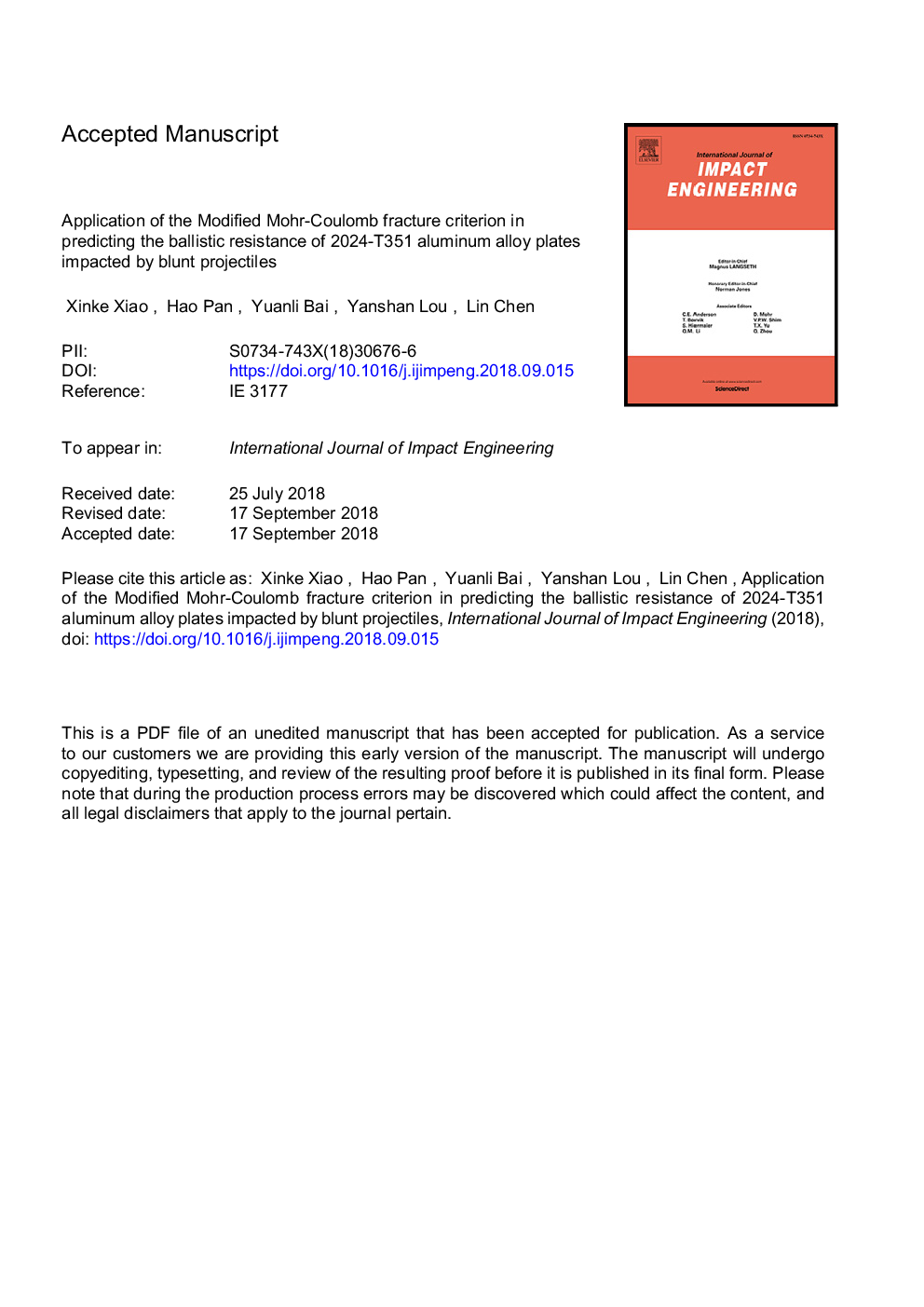| Article ID | Journal | Published Year | Pages | File Type |
|---|---|---|---|---|
| 11016285 | International Journal of Impact Engineering | 2019 | 45 Pages |
Abstract
The majority of current finite element (FE) simulations on shear plugging adopted Lode independent fracture criteria, and the value of utilizing a Lode dependent fracture criterion in predicting the ballistic resistance of metallic plates undergoing shear plugging has not been well understood. A group of 12.65â¯mm diameter blunt rigid projectiles were fired against 9.94â¯mm thick 2024-T351 aluminum alloy plates by using a one-stage gas gun in the impact velocity range of 133.4â¯m/sâ¼363.8â¯m/s. A failure mode of Shear plugging was observed in the test and the ballistic limit was obtained by fitting the initial and residual velocity data. A 3D FE model corresponding to the test was built in ABAQUS and then was adopted to predict the ballistic resistance and fracture behavior of the target. In the simulations, a slightly modified Johnson-Cook constitutive relation was companied with either the Lode dependent Modified Mohr-Coulomb (MMC) fracture criterion or the Lode independent original Johnson-Cook fracture criterion. It was found that the FE model using the MMC fracture criterion predict the ballistic limit and shear plugging behavior in good accordance with that obtained in the tests. In contrast, the simulations using the Johnson-Cook fracture criterion over-predicted the ballistic limit by 28.5% although the shear plugging failure pattern was reasonably predicted. Detailed analysis shows that the dominant stress state of the material in the shear plugging band is nearly shear, where the Lode angle has an obvious influence to reduce the fracture strain of the metal comparing with axial symmetric conditions. FE simulations by using fictitious metals with the same fracture data at axial symmetry tension but different fracture stain at shear also confirm that the ballistic resistance of a metal plate is much dependent on the effect of the Lode angle on a material's ductility.
Related Topics
Physical Sciences and Engineering
Engineering
Mechanical Engineering
Authors
Xiao Xinke, Hao Pan, Yuanli Bai, Lou Yanshan, Chen Lin,
